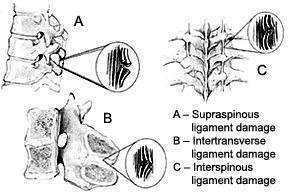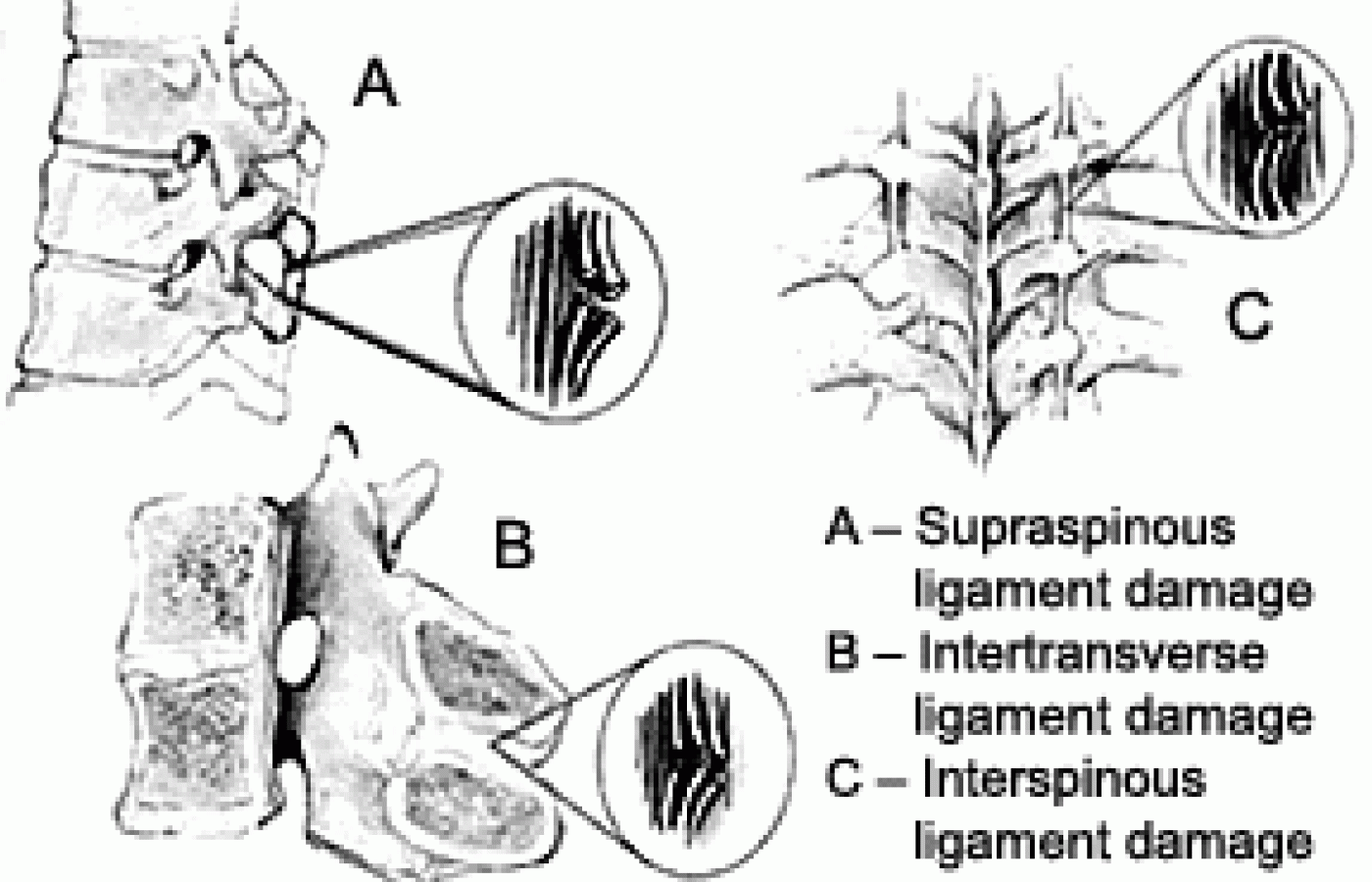Some doctors thrive in a personality-based clinic and have a loyal following no matter what services or equipment they offer, but for most chiropractic offices who are trying to grow and expand, new equipment purchases help us stay relevant and continue to service our client base in the best, most up-to-date manner possible. So, regarding equipment purchasing: should you lease, get a bank loan, or pay cash?
Cervical Spine Injuries: Treat the Damaged Ligaments
Once in a while, I read something that profoundly changes the way I approach my patients. The articles I've referenced here, from Ben Benjamin, PhD,1 massage therapist, fit into that category. The topic is treatment of injury to the cervical spine. The focus is learning to identify and treat the specific involved cervical ligaments with manual methods.
But first, here's the back story. I have been fascinated with ligaments for quite a while. Prolotherapy has helped me personally and helped many of my patients. Prolotherapy uses injections of glucose and other chemicals to "irritate" ligaments and tendon insertions, stimulating the body to initiate fibroblast activity and lay down new tissue, reinforcing the injured ligament or tendon.
When I learned the Graston Technique, I found that I could produce a similar effect through instrument-assisted cross-frictional massage. I remembered my first exposure to Cyriax principles in soft-tissue classes with Warren Hammer. These classes focused on functional testing to determine where the injury was, and the use of cross-frictional massage to treat ligaments and tendons. Dr. Hammer has written numerous articles for Dynamic Chiropractic focusing on tendinosis,2 the concept that frayed and overused soft tissues are the source of many chronic pain patterns. This article is an application of the same principles that I introduced earlier in looking at the sacroiliac joint,3 emphasizing ligamentous integrity.
We have all looked at cervical X-rays. Immediately after injury, we use templating to determine if there is excessive motion, indicating ligamentous damage. When we study X-rays on older clients with old injuries, we note that there are degenerative changes, indications that over the years, the body has laid down extra bony tissue in areas of stress or areas that have excessive motion.
How can we put these pieces together and make a difference for our patients' chronic neck pain? We know that poorly healed ligament injuries are a major source of chronic pain.4 We know that ligament injuries happen frequently in motor vehicle accidents and other cervical trauma. We know that cross-frictional massage has stood the test of time, and can help heal damaged tendons and ligaments, both through breaking down adhesions and in stimulating fibroblast activity.5 We know that passive range of motion and overpressure, when they reproduce pain, tell us that the passive structures (the ligaments), are at least partially responsible for the pain.

Now, back to Ben Benjamin's articles. I recommend you read all three articles, which you can access directly via his Web site.1 To quote from the first article, "Microscopic tears and the resulting adhesive scar tissue in the ligaments of the neck are the most prevalent forms of cervical injury and the most common culprits in chronic neck pain." Dr. Benjamin goes on to describe, in detail, Cyriax-based functional testing, going through passive cervical ROM with overpressure. This usually will elicit the pain when it is generated from ligaments. He describes how to palpate the cervical intertransverse, interspinous and supraspinous ligaments. The interspinous ligament is quite deep, and probably impossible to reach with the hands. He tells how to use your hands to provide cross-fiber massage for these ligaments. I think these articles are brilliant and user-friendly, with detailed descriptions of the methods used. In all of the whiplash-related literature I have read, the microtears of the ligaments are emphasized, but rarely addressed with a specific treatment.
After 26 years in practice, why do I need an article in an obscure massage journal to remind me to start identifying specific ligament injuries in the lower cervical spine, and treat them with frictional massage? How many of you are routinely examining, identifying and specifically addressing the lower cervical ligaments? When the student is ready, the teacher will appear.
How to Identify and Treat Cervical Ligament Injuries
I always attempt to make my articles practical, and give you something to use. I'll briefly describe the exam, the palpation and how I treat injured cervical ligaments. First, how do we identify the involved ligaments? Damaged ligaments produce sclerotomal pain; pain that is referred distally in the body. So, the location of the pain is not usually the source of the pain. The lower cervical spine can refer to the shoulder, to the upper arm, and often to the upper medial border of the scapula.
Begin with having the patient perform active cervical range of motion. Does this cause pain? Where is the pain felt? Second, at the end of the active range, add gentle, passive pressure with your hand to take them to the full end range. Ask the same pain questions. Third, at the end range, you can add overpressure, gradually in a more fragile patient, or more suddenly, with a slight, gentle jerk, in a stronger or younger patient. Again, ask if and where it hurts. If these tests cause pain, it is probable that ligaments are at least part of the cause of this pain.
What ligaments are causing the pain? If the pain is felt on the side, check the intertransverse ligaments first. If the pain is felt in the back of the neck, check the supraspinous ligaments first. Palpation of the supraspinous is fairly straightforward. You can have the patient flex their head forward to put the ligaments on tension, and open these spaces for easier palpation. Press into the space between the spinous processes, both from the posterior and from either side.
To test the intertransverse ligaments, come in from the side. Palpate the transverse processes and find the ligament between them. You can open the joint by side-bending the head away from the side you are assessing. It may be easier to reach across the neck from behind, using your middle finger to feel this space. The seventh cervical intertransverse is often injured. To find this one, you need to push the anterior fibers of the upper trapezius out of the way.
You are looking for localized tenderness and tissue texture changes. Having found the involved ligament, you can treat, with the goal of breaking down adhesions and stimulating fibroblastic activity to initiate first-stage healing. You can accomplish this through frictional massage. You can visualize the ligament, and apply manual cross-friction across the fibers. Another approach is to use multiple directions both across and with the "grain" of the fibers. You will find that specific directions have more obvious grit or barrier, and these are probably the most significant ones. You can use your hands, or you can use instruments for these procedures. If you are using your hands, be careful and reinforce your fingers. You don't want to wear out these most valuable tools. The classic manual Cyriax approach recommends five to 15 minutes of friction massage. The approach I tend to use, instrument-assisted friction, recommends one minute per area, with a maximum of six to eight minutes.
When you are done with this treatment, you should see immediate changes in range of motion and/or immediate decrease in pain on range-of-motion testing. This immediate change may or may not last, but at least it is an indicator that you have identified a significant structure.
I'll describe a brief recent case history involving a 28-year-old female who was one year out from a whiplash-type motor vehicle accident (MVA). Her first chiropractor was unable to help this area resolve. I was getting frustrated after six treatments of giving her only temporary relief. I finally re-read these articles, and started to focus on her chronic spot, on the left side of C6-C7-T1, using frictional massage. After three of these treatments, the area no longer feels tender, no longer shows up as a restricted segment, overpressure no longer causes pain, and her neck feels the best it has felt since her MVA.
Most of you reading this are chiropractors. Do adjustments correct this ligamentous problem? If an adjustment is going to correct this, it will be obvious after one to three treatments, with lasting changes in the indicators outlined here. If the joint and ligaments remain tender and continue to feel abnormal, you need to try something else. Another question: Is the involved joint stuck or is it hypermobile? This question is difficult. We live in the "soft" evidence world of palpation. After all my experience with prolotherapy and various forms of cross-frictional work, I have noted that unstable joints often feel restricted. Why is this? The muscles are just chronically overworking, and probably hypoxic as well. Muscles are supposed to be secondary stabilizers, if the ligaments are lax and not doing their job, the muscles will overwork and stay tight, giving the feeling of restriction.
Is frictional massage to involved cervical ligaments the Holy Grail? Is it the only treatment I will ever need for chronic neck pain? No! Use all of your tools and add this one. Check the joints above and below. Don't forget to check for anterior-to-posterior joint play in the lower cervical spine. Address the sterno-clavicular, sterno-chondral, and deep chest structures. Teach the patient appropriate stretches and stabilization. Treat the muscular component of the myofascial pain. Keep learning and keep adding tools to your toolbox, both to provide optimal results to your patients and to enhance your own excitement and satisfaction in practice.
References
- Benjamin, B. "Cervical Injuries" (Parts 1, 2 and 3). www.benbenjamin.net/articles.html.
- To access Dr. Hammer's articles, visit www.chiroweb.com/columnist/hammer or visit www.warrenhammer.com/articles_main.htm.
- Heller M. "Sacroiliac Revisited; The Importance of Ligamentous Integrity." July 2, 2005. www.chiroweb.com/archives/23/14/10.html.
- Dwyer A, Aprill C, Bogduk N. Cervical zygapophyseal joint pain patterns. I: A study in normal volunteers. Spine, June 1990;15(6):453-7.
- Davidson CJ, Ganion L, Gehlsen G, Roepke J, Verhoestra B, Sevier TL. Morphologic and functional changes in rat Achilles tendon following collagenase injury and GASTM. Journal of the American College of Sports Medicine 1995;27(5).



